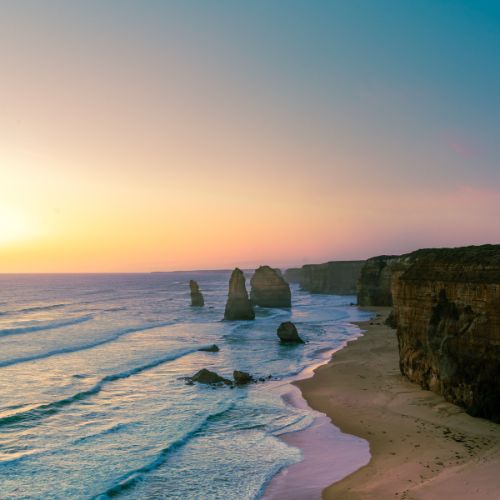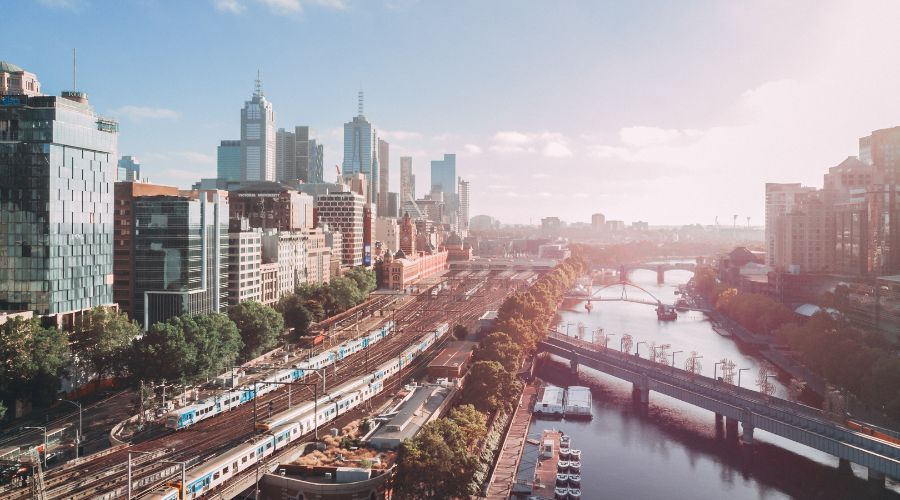Key Info
- Average temp during the day: 21.5C
- Average rainy days per year: 77
- Melbourne in Victoria is Australia’s top ranked student city and the 6th best student city in the world
- 10 universities
- Culturally diverse creative hub for the arts, music & fashion

Overview
The most densely populated state in Australia, Victoria is also its second-smallest by area. More than 182,000 international students attend Victoria’s 10 universities, including Monash and La Trobe universities, and the Swinburne University of Technology. The capital, Melbourne, is the urban centre of Victoria, but towns and smaller cities throughout the state attest to its international outlook and strong economic and social fabric.
Victoria first developed its cosmopolitan air when gold was discovered in Victoria and New South Wales in the early 1850s. When one of the world’s richest and most easily accessible goldfields was discovered in Victoria’s Mt. Alexander, gold bugs from around the world flocked to the state to seek their fortunes. Within a few years, tiny Victoria supplied more than a third of the world’s gold.
Today, Victoria’s economy is Australia’s strongest, having diversified into agriculture, manufacturing, digital technology, creative industries, and retail. It is Australia’s leading agricultural producer by gross value, contributing nearly 30% of Australia’s total agricultural output. In recent years, Victoria has been at the centre of Australia’s renewable energy industry, and has set a goal of deriving 95% of all its electricity from renewable sources by 2035.
Considering its modest size, Victoria is remarkably geographically diverse. Its southerly location gives it a gentler climate than much of Australia, but its long coastline still sports some remarkable beaches. Inland, the Goldfields region opens onto the Grampians, a mountain range that affords excellent hiking while being dotted with towns that have preserved the Victorian architecture of the region’s gold-rush heyday. The average daily temperature in Victoria is a temperate 21.5°C, and it sees rainfall on 77 days of an average year.
Melbourne
Melbourne is Australia’s cultural capital and consistently ranks as Australia’s best student city. QS recently named Melbourne the fifth-best student city in the world, ahead of Berlin, Paris, Boston, and Edinburgh.
Roughly 94,000 international students live in Melbourne and are welcomed into a diverse community in which nearly 40% of all residents were born outside of Australia. Melbourne’s public transport system makes it easy to travel, and students pay just half of the normal rate for an annual public transport pass.
Its diversity and strong public infrastructure make Melbourne a hotspot for nightlife, a huge variety of cuisine, and a full range of cultural offerings; many of them geared toward and/or created by the city’s large student population. Melbourne claims to host more live music venues than any city on earth, and no one has proved them wrong. From the Melbourne Comedy Festival to Melbourne Fashion Week, the city makes a wide variety of entertainment and cultural options available to everyone.
Melbourne’s economy drives Australia’s most productive state, and the city is home to the international and regional headquarters of many global corporations. It hosts Australia’s second-largest seaport, a distinction that underscores its close business ties to Japan, Indonesia, and beyond.

- Study in Australia
- Study in Dubai
- Why Go and What's Involved
- Explore Australia
-
Choose a University
- Australian National University
- Bond University
- Flinders University
- Griffith University
- James Cook University
- La Trobe University
- Macquarie University
- Monash University
- Swinburne University of Technology
- The University of Newcastle (UoN)
- The University of Western Australia (UWA)
- University of Tasmania
- University of Wollongong (UoW)
- Choose a Course
- Student Support
- Apply Now
- FAQs
- Contact Us
